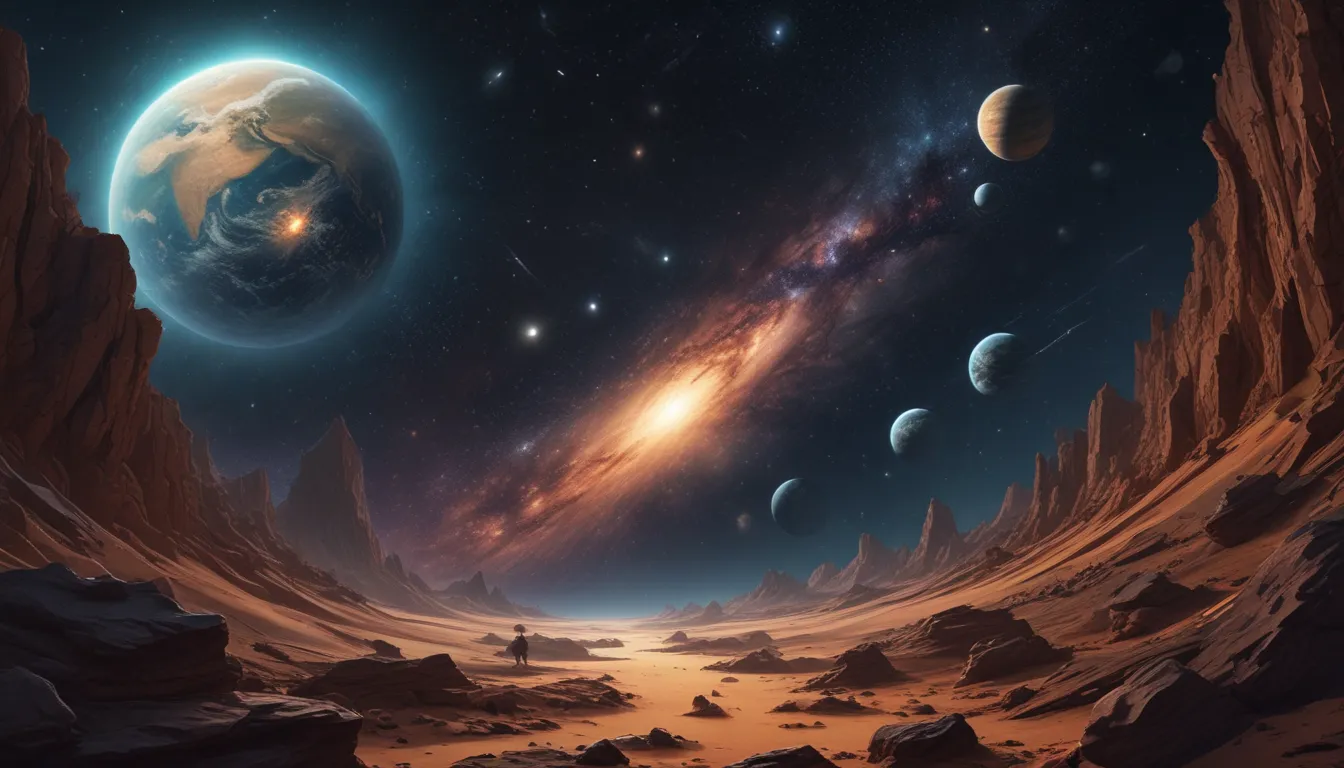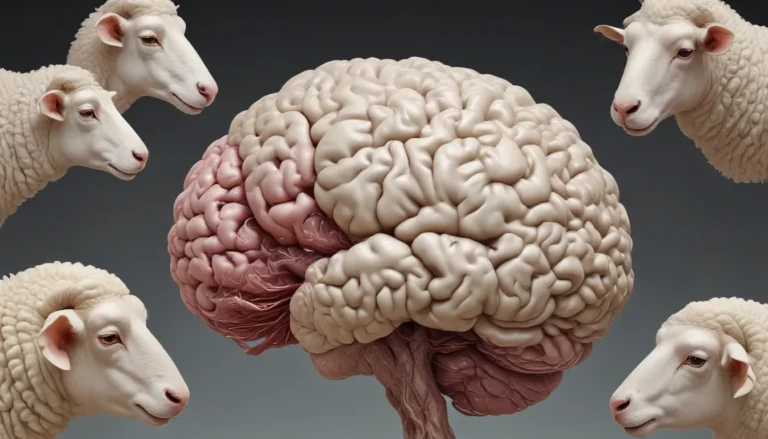A Note About Images: The images used in our articles are for illustration purposes only and may not exactly match the content. They are meant to engage readers, but the text should be relied upon for accurate information.
Space has always been a source of wonder and inspiration for both kids and adults. It’s a vast, mysterious realm filled with endless possibilities and hidden secrets waiting to be uncovered. In this article, we will embark on an exhilarating journey through space, unveiling 19 incredible facts that will ignite the curiosity of young minds and leave them eager to learn more about the universe.
Space: A Cosmic Wonderland
Space is a realm of endless wonders, from the dazzling beauty of the night sky to the mind-blowing phenomena unfolding in distant galaxies. Telescopes serve as our windows to the universe, enabling us to explore the cosmos and unravel its mysteries. The Space Race has marked historic milestones in space exploration, fueling our quest to understand the universe beyond our planet.
The Sun: Our Cosmic Campfire
At the heart of our solar system lies the Sun, a massive star that bathes us in light and warmth, making life on Earth possible. Through the process of nuclear fusion, the Sun releases an immense amount of energy, sustaining all life forms on our planet. It serves as the ultimate cosmic campfire, keeping us bright and cozy in the vastness of space.
- The Sun is a bright, hot ball of gas at the center of our solar system.
- It provides light and heat to all the planets, including Earth.
- Without the Sun, life as we know it would not exist.
The Planets: Our Celestial Companions
Our solar system is home to eight diverse planets, each with its own unique characteristics and features. From the scorching heat of Mercury to the icy landscapes of Neptune, each planet offers a glimpse into the diversity of our cosmic neighborhood. Studying these planets unlocks valuable insights into the formation and evolution of our solar system.
- There are eight planets in our solar system: Mercury, Venus, Earth, Mars, Jupiter, Saturn, Uranus, and Neptune.
- Each planet has distinct properties, compositions, and distances from the Sun.
- The planets exhibit a variety of moons, ranging from none to dozens orbiting around them.
The Moon: Earth’s Loyal Companion
The Moon, Earth’s only natural satellite, casts its luminous glow upon our planet, shaping tides and influencing Earth’s climate. As the fifth largest moon in the solar system, it stands as a beacon in the night sky, captivating the hearts and minds of humans throughout history. The Moon’s gravitational dance with Earth is a mesmerizing display of cosmic harmony.
- The Moon is Earth’s only natural satellite.
- It orbits around our planet, impacting tides and climate.
- The Moon’s radiant presence in the night sky has inspired humans for centuries.
Exploring the Cosmos: The Milky Way Galaxy
The Milky Way, our celestial home, is a grand spiral galaxy brimming with billions of stars, planets, and cosmic wonders. Spanning vast distances, the Milky Way beckons us to ponder the mysteries of the universe and our place within it. Nestled within this cosmic tapestry, our solar system resides among the billions of stars that populate this awe-inspiring galaxy.
- The Milky Way is a spiral galaxy containing our solar system.
- It is home to an array of celestial objects and phenomena.
- Our solar system resides in one of the Milky Way’s spiral arms, known as the Orion Arm.
Unveiling Mysteries: Asteroids in Space
Asteroids, rocky remnants from the early days of our solar system, orbit the Sun in a celestial dance. Ranging in size from meters to kilometers, these space rocks provide valuable insights into the history of our cosmic neighborhood. Studying asteroids offers a glimpse into the formation and evolution of our solar system, shedding light on the secrets of our celestial origins.
- Asteroids are small, rocky objects orbiting the Sun.
- They are remnants from the formation of the solar system.
- Most asteroids reside in the asteroid belt between Mars and Jupiter.
Embarking on a Cosmic Journey: The International Space Station
The International Space Station (ISS) orbits Earth as a symbol of international cooperation and scientific discovery in space. Housing astronauts from various countries, the ISS serves as a platform for groundbreaking research and experiments in microgravity. Spiraling around the Earth at high speeds, the ISS represents humanity’s enduring quest to explore the final frontier.
- The ISS is a habitable artificial satellite orbiting Earth.
- It facilitates scientific research and international collaboration in space.
- The ISS orbits Earth every 90 minutes, hosting astronauts continuously since 2000.
Illuminating the Cosmos: The Hubble Space Telescope
The Hubble Space Telescope, a marvel of modern astronomy, has captured stunning images of distant galaxies, nebulae, and celestial phenomena. Launching in 1990, it has revolutionized our understanding of the universe, unveiling the beauty and complexity of cosmic landscapes. The Hubble Space Telescope stands as a testament to humanity’s enduring curiosity and thirst for exploration.
- The Hubble Space Telescope provides breathtaking views of the universe.
- It has contributed to groundbreaking discoveries in astronomy and astrophysics.
- Images captured by the Hubble Space Telescope inspire wonder and awe in viewers.
Into the Unknown: Exploring Black Holes
Black holes, enigmatic cosmic phenomena with intense gravitational pull, captivate the imagination of scientists and stargazers alike. These mysterious regions in space devour light and matter, defying the laws of physics as we know them. Despite their inscrutable nature, black holes play a crucial role in the cosmic ballet of galaxies, shaping the fabric of the universe with their irresistible pull.
- Black holes are regions in space with intense gravitational forces.
- They form when massive stars collapse under their own gravity.
- Black holes remain a source of fascination and inquiry in the field of astrophysics.
A Celestial Spectacle: The Northern Lights
The Northern Lights, also known as the Aurora Borealis, dance across the polar skies in a mesmerizing display of colors and patterns. Resulting from charged particles interacting with Earth’s atmosphere, these ethereal lights enchant viewers with their otherworldly beauty. The Northern Lights serve as a reminder of the interconnectedness between our planet and the vast cosmos beyond.
- The Northern Lights are a colorful natural phenomenon in Earth’s polar regions.
- They occur when charged particles from the Sun interact with the atmosphere.
- The Northern Lights have captivated viewers for centuries with their stunning displays.
Voyage to the Stars: Astronaut Training
Astronauts undergo rigorous training to prepare for the challenges of space travel. From survival simulations to mastering spacecraft operations, astronauts equip themselves with the skills needed to thrive in the unforgiving environment of space. Their training encompasses physical fitness, mental resilience, and in-depth knowledge of the complexities of living and working beyond Earth’s atmosphere.
- Astronauts undergo extensive training to prepare for space missions.
- Training includes simulations, survival exercises, and scientific experiments.
- Astronauts learn to adapt to the unique challenges of space travel and microgravity.
Rover Expeditions: Unveiling Mars
The Mars Rover embarks on robotic missions to explore the rugged terrain of the Red Planet, unraveling its geological mysteries and potential for life. By traversing Martian landscapes and conducting experiments, the Mars Rover expands our understanding of Mars and paves the way for future human exploration. Each mission offers valuable insights into the geology and climate of Mars, shaping our vision of the Red Planet.
- The Mars Rover conducts robotic missions to explore Mars.
- It provides valuable data on the geology and climate of the Red Planet.
- Rover expeditions offer insights into the potential for life on Mars.
Jupiter’s Fury: The Great Red Spot
Jupiter, the largest planet in our solar system, harbors the Great Red Spot, a colossal storm raging for centuries. Larger than Earth itself, this iconic feature of Jupiter’s atmosphere showcases the dynamic forces at play in the gas giant’s turbulent environment. Scientists continue to study the Great Red Spot, unraveling its mysteries and deepening our understanding of this awe-inspiring planetary wonder.
- Jupiter is home to the Great Red Spot, a massive storm.
- The Great Red Spot has captivated scientists for its longevity and size.
- Studying Jupiter’s features sheds light on the dynamics of planetary atmospheres.
Galactic Neighbors: The Andromeda Galaxy
The Andromeda Galaxy, our closest spiral neighbor, beckons from across the cosmic expanse, offering a glimpse into the vastness of the universe. Visible to the naked eye from Earth, this majestic galaxy harbors billions of stars and holds the promise of galactic collisions in the distant future. The Andromeda Galaxy stands as a cosmic neighbor, bridging the gap between our own Milky Way and the countless galaxies that populate the universe.
- The Andromeda Galaxy is the closest spiral galaxy to the Milky Way.
- It is visible to the naked eye and contains billions of stars.
- The Andromeda Galaxy is on a collision course with the Milky Way, shaping the future of both galaxies.
Telescopic Tales: Unveiling the Universe
Telescopes serve as our cosmic lenses, peering into the depths of space and unraveling the mysteries of distant worlds. From optical telescopes to space telescopes, these instruments unlock the secrets of galaxies, stars, and cosmic phenomena. Telescopes revolutionize our understanding of the universe, painting a vivid portrait of the cosmos and guiding our explorations into the unknown.
- Telescopes collect and magnify light from celestial objects.
- They enable astronomers to observe planets, stars, and galaxies.
- Telescopes play a vital role in advancing our understanding of the universe.
The Legacy of Discovery: Space Shuttle Endeavors
The Space Shuttle, a groundbreaking spacecraft of the past, revolutionized human spaceflight capabilities, launching a new era of exploration. From deploying satellites to conducting scientific missions in orbit, the Space Shuttle program left a lasting legacy in the annals of space exploration. Its iconic missions, such as deploying the Hubble Space Telescope, inspired generations to reach for the stars and explore the frontiers of space.
- The Space Shuttle program transformed human spaceflight.
- It conducted missions to deploy satellites and conduct research.
- The Space Shuttle program paved the way for future advancements in space exploration.
Stellar Stories: Orion Constellation
The Orion constellation, a celestial masterpiece in the night sky, offers a tapestry of stars and nebulae that captivate the imagination. Named after the mythological figure Orion, this stellar formation has inspired skywatchers and astronomers for millennia. With its distinctive shape and prominent features, the Orion constellation stands as a celestial beacon, guiding the gaze of stargazers into the depths of space.
- The Orion constellation is a recognizable star pattern in the night sky.
- It is named after the mythological figure Orion.
- The Orion constellation has intrigued observers throughout history.
Cosmic Hazards: Space Debris Dangers
Space debris, fragments of defunct satellites and spent rocket stages, pose a threat to operational spacecraft and Earth’s orbital environment. Efforts to track and mitigate space debris aim to safeguard space missions and ensure astronaut safety. By developing technologies to remove and deorbit space junk, space agencies work toward preserving the sustainability of space activities and the security of our cosmic neighborhood.
- Space debris consists of defunct satellites and spent rocket stages.
- It poses risks to operational spacecraft and Earth’s environment.
- Efforts are underway to track and mitigate space debris hazards.
The Observatory of the Future: James Webb Space Telescope
The James Webb Space Telescope, a cutting-edge observatory slated for launch, promises to unveil new frontiers in space exploration. Designed to observe the universe in infrared wavelengths, this revolutionary telescope will capture unprecedented views of distant galaxies and cosmic phenomena. Scheduled for deployment in 2021, the James Webb Space Telescope heralds a new chapter in our quest to unravel the mysteries of the cosmos.
- The James Webb Space Telescope will observe the universe in infrared wavelengths.
- It is set to provide groundbreaking insights into distant galaxies.
- Launching in 2021, the James Webb Space Telescope offers a glimpse into the future of space exploration.
Cosmic Rivalry: The Space Race
The Space Race, a historic competition between nations, propelled humanity to new heights of space exploration. Fueled by the quest for scientific advancement and technological superiority, this intense rivalry led to groundbreaking achievements such as the first human in space and the first moon landing. The legacy of the Space Race endures in the spirit of exploration and discovery that continues to inspire future generations of astronomers, physicists, and space explorers.
- The Space Race was a period of competition between the United States and the Soviet Union.
- It led to significant milestones in space exploration and technology.
- The Space Race laid the foundation for future space missions and collaborations.
Embark on a Cosmic Odyssey
The “19 Amazing Space Facts for Kids” offer a mesmerizing glimpse into the wonders of the universe, sparking curiosity and wonder in young explorers. From the mysteries of black holes to the majesty of distant galaxies, each fact invites children to embark on a cosmic journey of discovery. By fostering a sense of wonder and curiosity about the cosmos, we inspire the next generation of scientists, astronauts, and space enthusiasts to reach for the stars and unravel the secrets of the universe.
Explore the Universe with Confidence
Our commitment to delivering engaging and trustworthy content ensures that every fact shared is a testament to the wonders of the cosmos. Each submission on our site undergoes meticulous review by our dedicated editors, guaranteeing the highest standards of accuracy and authenticity. Embark on a journey of exploration and discovery with confidence, knowing that the facts we offer are not only fascinating but also credible. Trust in our dedication to quality as you delve into the mysteries of the universe and uncover the marvels of space.
Intriguing and enlightening, the vast cosmos beckons us to venture into the unknown, shaping our understanding of the universe and our place within it. From the dazzling stars of the Milky Way to the enigmatic depths of black holes, the mysteries of space continue to inspire wonder and awe. As young explorers set forth on their cosmic odyssey, they carry with them the curiosity and passion to unravel the secrets of the universe, forging a path of discovery that will illuminate the cosmos for generations to come.






